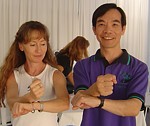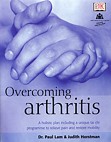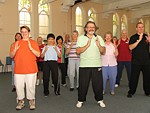Frequently Asked Questions
Choose the category of your question:
About Tai Chi for Health Programs
- What is Tai Chi for Diabetes?
- What is Tai Chi for Arthritis?
- What is Tai Chi for Back Pain?
- How to become an instructor of any of the Tai Chi for health programs?
- What are the difference between Tai Chi for Arthritis and Diabetes?
- What should I or my students do after learning Tai Chi for Arthritis Part I and II?
- I have a pinched nerve between L4 & 5 S1(or other medical condition), can any of your program help me?
- I have painful arthritis, can any of your program help me?
- Is Tai Chi for Arthritis same as Sun style tai chi?
About Tai Chi
- What is Tai Chi?
- What Can Tai Chi Do for You?
- What is Tai Chi for Beginners?
- How to Learn Tai Chi?
- Where can I find certified instructors?
- How to list myself as an instructor?
- Essential Principles for Beginners
- How to Improve Your Tai Chi?
- What are the Requirements to Become a Master Trainer (MT)?
- What is standing qigong practice?
- How often and how much should I practice tai chi?
- How to choose a sword?
Who is Dr Paul Lam? Click the category below for Dr Lam’s Tai Chi products.
- Beginner DVDs
- Intermediate DVDS
- Advanced DVDs
- Other products (CD, book, Workshops etc)
- How Useful is a DVD?
- How to Choose a DVD?
- Why buy from us?
- Tell me about Tai Chi for Arthritis – instructional Video/DVD and book.
- Tell me about Tai Chi for Diabetes – instructional Video/DVD
- Tell me about Tai Chi for Beginners – instructional Video/DVD
- What music goes best for my tai chi practice and performance?
- What are the benefits of coming to your one week workshops?
- Who is Dr Paul Lam?
- When and where are the forthcoming workshops?
- Where are the photos of previous workshops?
- What are the type of tai chi workshops conducted by Dr Paul Lam?
- What is Tai Chi by Dr Lam
- History of Tai Chi by Dr Lam
- What is Tai Chi by Sybil Wong
- An Introduction to Tai Chi by John Mills
What is Tai Chi for Diabetes?
This specially designed program by medical and Tai Chi experts to prevent and improve the control of diabetes, supported by Diabetes Australia. It is suitable for people with no prior knowledge of Tai Chi, is safe and easy to learn.
According to traditional Chinese medicine, enhancing life energy (Qi) in the appropriate energy channels will improve the condition. This program is also designed to enhance these energy channels.
The DVD includes a general introduction of Tai Chi and diabetes, warm up and cooling down exercises, Qigong for Diabetes, 11 basic movements and 8 advanced movements. Viewers can learn at your own pace using the easy-to-learn and step-by-step instructions.
The set is based on both Yang and Sun style, selected to enhance Qi and provide the progressive exercises desirable for people with diabetes.more
Click here to find out about the instructors/leaders training workshop around the world.back to top
What is Tai Chi for Arthritis?
Designed by Dr Paul Lam, together with a panel of medical and tai chi experts, to help people with arthritis to reduce pain and improve quality of life. Many arthritis foundations worldwide support this program including: Arthritis Care UK and Arthritis Foundation of Australia; and adapted by Arthritis Foundation of America.
The program is easy-to-learn, safe and shown to be effective.
Clinical studies have shown it to be effective and safe.
![]()
![]()
A practical guide for a more active, pain free life, this book features the Tai Chi for Arthritis program. Written by Dr Paul Lam and Judith Horstman.
back to top
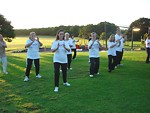
There are similarities and differences. The similarities are that both programs are easy to do, they benefit most aspects of health and are relatively safe. So either program would be suitable for a beginner with or without any chronic condition. It is like a large shirt that can be suitable for anyone to wear but if you tailor-make a shirt, it will fit better.
Both programs will improve stamina, flexibility, muscular strength, relaxation and posture, other features with each program are listed below.
Tai Chi for Arthritis: This is designed for people with arthritis in mind with emphasis on:
- safe for people with arthritis
- effective healing by improve qi and circulation of joint fluid
- increased mobility
- minimal knee strain
The set is composed based on Sun style.
Tai Chi for Diabetes: This is designed for people with diabetes with extra precautions of problems specific for people with diabetes:
- it has gradual increments of exercise levels therefore minimises the risk of hypoglycemia
- the set utilises traditional Chinese medicine theory to focus on the energy channels that are more relevant to diabetes
- contains slightly higher level of physical exertion than the arthritis set
- emphasis on helping to prevent the complication of diabetes such as heart disease, peripheral neuropathy (nerve damage to feet), strokes and other problems.
We utilise both Yang and Sun styles to achieve these objectives.back to top
Dr Paul Lam and his team have created an innovative Six Easy Steps for beginners.
“A journey of a thousand miles starts with the first step.”… A Chinese proverb. Dr. Lam helps you place your first Tai Chi step in the right direction, making it an enjoyable experience. You will learn a simple and effective set of Tai Chi and gain a solid foundation for further progression.
The instructional DVD commences with a brief introduction to Tai Chi, followed by a series of unique Tai Chi warm up, cooling down and Qigong exercises. This then leads to a set of Foundational Movements and finally the Beginner’s Forms.back to top
What should I or my students do after learning Tai Chi for Arthritis Part I and II?
Dr Lam would recommend for an average student to take half to one year at one lesson per week basis to learn and improve the 12 movements, then another year to do Part II. You can also do the other side of Part II… then some time to explore the depth of both.
It is important to work with a student to understand the depth of tai chi, that repetition and exploring depth is more important than doing many forms.
After that you or your students should be ready to move onto Sun 73. I advise not to just keep learning new forms, the magic of tai chi lies within its essential principles which are practically bottomless in depth. One needs to understand the principles of tai chi after learning the elementary of it. Learning many forms helps but is not the most effective way to improve in tai chi.
You and your students could consider attending the “Exploring the depth of TCA” workshop. Check Dr Lam’s calendar for coming workshops.back to top
How Useful is a Tai Chi DVD? 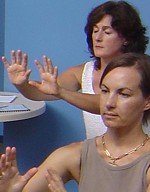
Books are invaluable as a learning tool, but DVDs have advantages over books for Tai Chi. In the art of “action”, a picture is worth a thousand words and a DVD, which is has numerous moving pictures, is worth many times more than that.
Admitted, without writings, Tai Chi would not have been passed onto the next generation, as it has so far. No one will deny the invaluable contribution of books. On the other hand, when I saw the original footage of Cheng Men Ching in video, I was surprised that he was not what I imagined from his writings that he would be. And I have learned a great deal from that footage. Watching video or films of other renowned Tai Chi experts has inspired and helped me to understand a lot more about Tai Chi.
The value of books and DVDs both are immeasurable. The value of the video has not yet been fully appreciated. History will tell us how invaluable it is. Books have been around for thousands of years; you cannot imagine what Tai Chi would be like without books. By now I cannot imagine what Tai Chi would be like without DVDs.
Technology is here to enrich and to facilitate our learning. Thousands of people who have learned Tai Chi from our videos & DVDs have gained significant improvements in health. DVDs like ours are produced with meticulous planning and professional quality. Each one has involved many experts, and the most useful and relevant informa
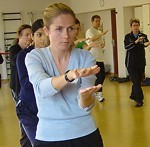
What are some advantages of DVDs?
- You can view the same movement as often as required.
- You might not find a teacher that suits you, but you can change DVDs anytime.
- You have the opportunity to work with some of the best instructors.
- You view inspiring performances by well-known practitioners.
- You can choose your favorite teaching style.
- DVDs can be used as a learning aid together with face-to-face teaching.
- You can review points that you forget after your class.
back to top
All our DVDs are produced professionally with broadcasting quality, each title has something different and useful to offer. Some of our self-teaching titles are best sellers worldwide available from major retail stores, buying from us directly has these advantages:
- Full range of DVDs and other tai chi products available.
- 30 days money back guarantee
- Support Dr Lam’s effort to promote tai chi and provide services.
- Personal service from our team, Dr Lam will answer your question at “Ask Dr Lam”
back to top
What are the types of Tai Chi Workshops conducted by Dr Paul Lam and his team?
Dr Lam and his team conduct regular workshops around the world. They are interactive, inspirational, useful and fun.1. In the two-day Instructor’s Training for the programs Tai Chi for Arthritis, Tai Chi for Diabetes and Tai Chi for Back Pain, you will learn how to teach one of these programs safely and at the same time learn or improve your level of tai chi. Many arthritis and diabetes foundations support these programs.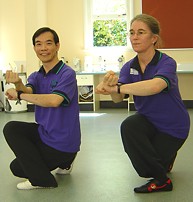
Dr. Paul Lam, a family physician in Sydney, Australia, is a world leader in the field of tai chi for health improvement. He has collaborated with medical and tai chi experts, and with the support of arthritis and diabetes foundations/associations around the world, to create the Tai Chi for Arthritis, Tai Chi for Diabetes and Tai Chi for Back Pain programs. They have helped many people improve their health and well being. Dr Lam has written books, articles and produced many instructional DVDs/videos. >>more about Dr Lam
Go to Dr Lam’s workshop calendar and his Master Trainer’s workshop calendar for information.back to top
Hello from Dr Paul Lam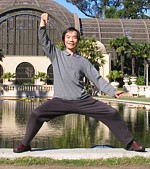
Welcome! You will find our beginners instructional DVDs will help you to improve health and quality of life, and the intermediate and advanced series to expand your knowledge and skill. All our instructional DVDs are user friendly and effective in improving your tai chi. You can read reviews of each of our products when you are in our store.
We are dedicated to provide the best possible material for tai chi and health. Please contact me with your questions, requests, or comments.
Choose from these instructional DVDs:
And a range of other products (CDs, books,etc)
back to top
I have a pinched nerve between L4 & 5 S1 (or other medical condition), can any of your program help me?
Everyone is different even with the same medical condition, therefore you must consult your health professional before embarking upon any exercise with a medical condition. It is difficult for any doctor to make an appropriate diagnosis and recommend treatment without seeing a patient face to face. Dr Lam would not like to give you inaccurate answer that may harm you, however he would be prepared to supply information to your health professional on request.
Tai Chi for Arthritis, Diabetes and Back Pain programs are created for people with the respective condition, and are gentle, relatively safe and easy-to-learn. Almost all people with these conditions are can learn and benefit from the programs, although we recommend strongly you check with your health professional prior to commencing. It is preferably to find an instructor who is trained and certified by Dr Lam or his authorised master trainers, because certified instructors/leaders are trained to teach the program safely and effectively.
Pinched nerve can be a mild or very severe condition, in severe cases, people can be immobilised and might need immediate surgery. On the other hand it could be quite mild and people can do fairly normal daily activities. In almost all cases of back pain, the deep stabilizing muscles of the back become weak very quickly. Studies have shown strengthening them can help back pain, therefore it gives better muscular support for people with pinched nerve (or sciatica). If your health professional has approved you to do gentle exercise, including the exercises for back stabilizer muscles, Tai Chi for Back Pain can be ideal exercises for you. The deep stabillizing muscle exercises have different degree of exertion, your health professional will be able to guide you as how much you should do. The instructional DVD of Tai Chi for Back Pain comes in with detailed instructions.
Good luck with your condition.
Dr Paul Lamback to top
I have arthritis that causes me much pain, can any of your program help me?
There are over 100 different types of arthritis, and everyone is different, therefore you must consult your health professional before embarking upon any exercise. It is difficult for any doctor to make diagnosis and recommend treatment without seeing a patient face to face. Dr Lam would not like to give you inaccurate answer that may harm you, however he would be prepared to supply information about the Tai Chi for Arthritis program to your health professional on request.
Tai Chi for Arthritis program has been created for people with all types of arthritis. It is supported by many arthritis foundations around the world (including Arthritis Foundation of USA, Australia and Arthritis Care of UK) because the program is safe and effective.
Tai Chi for Arthritis program is gentle, relatively safe and easy-to-learn. Many people with severe arthritis have learned and benefited from using the program. The program has been proven by scientific studies to be safe and effective. It is preferably to find an instructor who is trained and certified by Dr Lam or his authorised master trainers because they are trained to be safe and effective.
Dr Paul Lamback to top
What is standing qigong practice?
Standing Qigong practice or zhan zhuang is Qigong practice to enhance your internal energy on a standing posture. It is a well known and a useful method, but like all useful methods, it does not suit everyone. My opinion is that it should be done carefully, not to spend too much time on it if you wish to do this. It can have undesirable side effects especially for older people or people with arthritis who can have problems standing on one position for a long period of time. You can use my Qigong exercise in the “Tai Chi for Back Pain” program or the five element Qigong. Please be advised by your health professional and use your discreption. Like any useful method, there is always good and bad points – pending on how the teacher implement the method.
The core of Tai Chi is qigong, and Tai Chi is moving qigong, by moving it is safer for many people. I would recommend using a beginners’ tai chi program rather than starting with standing Qigong.
Dr Paul Lamback to top
How to become an instructor of any of the Tai Chi for health programs?
Although the face to face workshop is usually open to everyone, but to be a certified instructors/leaders must fullfilled these 4 requirements. Except for the program Tai Chi for Back Pain, you must be a Tai Chi for Arthritis instructor or leader to qualify.
1. Have one of the following qualifications: Tai Chi teacher Advanced Tai Chi Student Physiotherapist or Physical Therapist Occupational Therapist Health Professional (nurse, doctors, traditional therapist) Accredited/Certified Exercise Instructor Nurse Certified Allied Health Assistants Other similar qualification
2. Have completed the preparation prior to the workshop and prepare to update your certificate every two years.
3. Attended an Instructors/Leaders’ Training workshop by Dr Lam or his authorised master trainers and met the requirements to be a safe and effective teacher, as well as pass a written test.
4. Hold a current certificate of an accredited first aid course or similar qualification eg RN or MBBS.
For Australian only : agree to use the title “Instructor” only if you are a currently qualified AKWF instructor; otherwise you should use the title “Leader” in relation to teaching this program
View Dr Lam’s upcoming workshops or his Master Trainers’ upcoming workshops.back to top
How often and how much should I practice tai chi?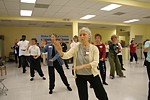
It depends on your objective and physical condition. For elderly and people with chronic conditions: Gradually build up the length and number of practice sessions, aiming for about 30-60 minutes for most days. A simple indication of how long your first practice sessions should be is the length of time you can walk comfortably at a steady pace. Remember five minutes a day is better than none, and several lots of five minutes will make half an hour.
For advanced practitioners one to two hours of dedicated and intelligent practice for most days would be appropriate. You can also put tai chi practice into your daily life. Walking the tai chi way, standing with tai chi posture, think with serenity and move in a nature curve.back to top
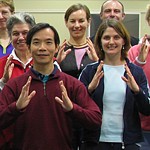
To quote Erwins, one of the participants at a workshop: “The workshop was great. You will get enough tai chi in this 1 week workshop to last you a lifetime. Plus since almost everyone is a tai chi practitioner, you will be able to network with them…”
Tai chi enthusiasts from all over the world participate in these workshops. Almost every participant has such a great time that they keep coming back. Many come to both USA and Australia workshops within one year travelling great distances. They always finished at an incredible height that everyone’s spirit was lifted for months, and their tai chi level improves very significantly. There will be small classes with individualised, interactive teaching, dedicated instructors and wonderful participants.
The only way to really find out is to try it.
back to top
How often and how much should I practice tai chi?
It depends on your objective and physical condition. For elderly and people with chronic conditions: Gradually build up the length and number of practice sessions, aiming for about 30-60 minutes for most days. A simple indication of how long your first practice sessions should be is the length of time you can walk comfortably at a steady pace. Remember five minutes a day is better than none, and several lots of five minutes will make half an hour.
For advanced practitioners one to two hours of dedicated and intelligent practice for most days would be appropriate. You can also put tai chi practice into your daily life. Walking the tai chi way, standing with tai chi posture, think with serenity and move in a nature curve.back to top
How to Choose a Tai Chi Sword?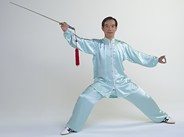
The sword is one of the oldest weapons in Chinese martial art history, back on the era of Bronze Age; bronze swords were unearthed by archaeologists. For those who have seen the Terra-cotta Warriors from the Qin Dynasty (over 2,200 years back), unearthed from old Chinese capital, Xian, you will notice the general and officers carrying swords. One of the earliest writing describes Zi Lu, a student of Confucious, demonstrating the swordplay to his teacher. The most famous poet in Chinese history, Li Bai, had written poems describing himself playing the sword while drunken (he was also famous for liking the bottle and inspired by the spirit), and the beauty of swordplay.
Characteristics of the Sword
The sword is a flexible weapon. It is known in China as the master of all weapons and the most popular and graceful of all weapons. It is an effective weapon with the following advantages:
” Light weight and flexible with cutting edges on both side, stabbing point on the tip, enabling user to inflict injury from different angles and with varying methods. ” Combining with stance, body posture and varying methods of application, it is rich in technique ” It is challenging and interesting to learn, therefore a good method for Tai Chi practitioners to improve skill ” A extension beyond your body
Why Learn How to Hold the Sword?
To be able to practice the sword well, one must learn how to hold a sword properly. If you start with the wrong technique of holding sword you won’t be able to utilise the sword fully.
How to Hold the Sword
There are many methods of using the sword such as thrusting forwards and cutting upward. The sword must be held in a flexible way so the grasp can be changed to execute different methods of usage swiftly when the need arrives.
One must avoid using harsh force. Harsh force will make the muscles tense and the wrist tight, and hinder the flow of the internal force. To hold the sword properly, one needs the flexibility of the wrist as well as the fingers.
There are three main ways to hold the sword.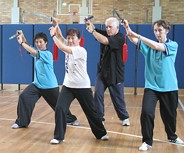
1. Carrying a sword with your left hand, assuming the right hand is your dominant hand. Your thumb on one side, middle finger and ring finger on the other side of the guard and the index finger straightened and rested on the handle. Usually you carry the sword in the left-hand in preparation. The sword is vertical to the ground with the tip of the sword pointing upwards and the sword is hidden behind your left arm.
2. When you are using the sword with the right hand, place the middle finger and the ring finger on one side and thumb on the other side of the handle. Hold the handle as close to the guard as possible with these fingers and use mainly these three fingers to hold the sword. The index finger and the thumb are often resting on the guard. The palm should be hollow in the sense that the palm should not be tightly against the handle of the sword.
3. Hold the sword fairly tightly with all the fingers together, all fingers on the handle. This method is only used occasionally, when you need to deliver a certain type of force (relatively more harsh force).
The Right Sword for You
Many swords are made for decoration. A suitable practice sword should be light, carrying it the way described above for at least ten minutes. You should not feel discomfort in your arm. Moving the sword around, practice the different cutting and thrusting techniques. Feel how well the sword balances on your hand, you should be able to do the varying techniques without excess strain to one group of muscles. The practice sword should not be sharp so as not to accidentally hurt anyone. It should be flexible when you move it.
A wooden sword is a good alternative. It is light and much safer, although the disadvantage is that it is not flexible. It is important to have the handle and the guard well made so that it fit your hand comfortably.
For the first time sword user, avoid buying an expensive sword until you understand what kind of sword work best for you. Many Chinese martial art shops supply reasonable quality sword. Take your time to look at the sword thoroughly, try it for five to ten minutes before buying it.back to top
What music goes best for my tai chi practice and performance?

I am sure no one went into as much research and effort the way Jenny and I did with our Tai Chi music CD. Jenny Ly is a genius composer. She watched me do tai chi and then composed the music to the rhythm and energy behind the tai chi forms, then she and her musicians play the music as I perform my tai chi. We re-adjust and re align the music so that it is just right for tai chi. Most music are composed to capture people’s mind or to relax people. Tai chi music should be different from the rest. It needs its own tempo and rhythm, and containing the tai chi energy and spirit to enhance your tai chi.
In the Tai Chi music in our CD, it says: “Dr Paul Lam’s Tai Chi movements flow smoothly and powerfully as they are driven by an internal energy. Students who practice along side him can almost feel the energy magically transfer to them. Composer Jenny Ly works with Dr Lam to capture this energy in music, which can be used to enhance practice and performance. The music can also be used by anyone for tranquility and inspiration.” These four pieces correlate to four major Tai Chi styles. Silk reeling is the inner power behind Chen style, Yang is meditative, Wu is gentle and Sun contains powerful Qigong. View the Tai Chi Music CD’s available.back to top
Is Tai Chi for Arthritis same as Sun style tai chi?
TCA (Tai Chi for Arthritis) is created based on the Sun style, it is easy to learn, safe and especially effective for people with different types of arthritis. It is a specially composed set by my team of tai chi and medical experts to improve arthritis and health.
back to top

